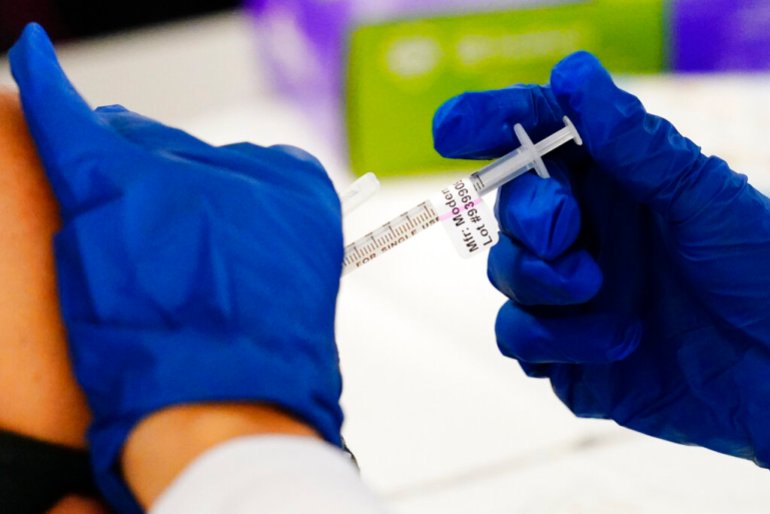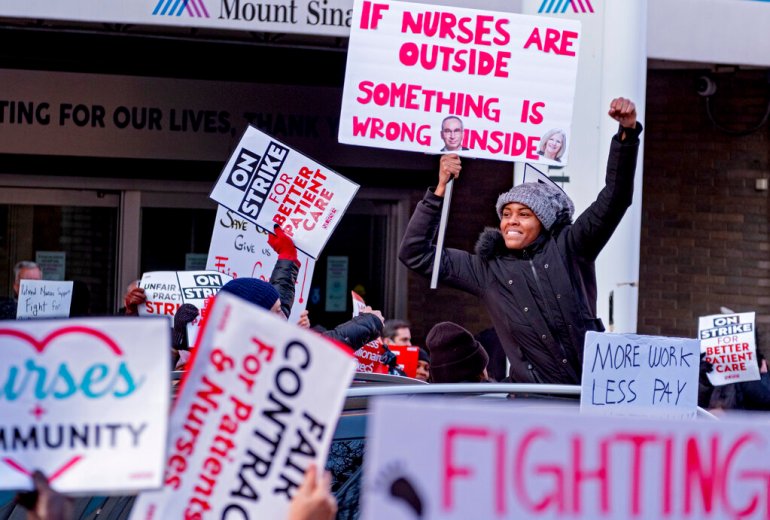Three years, 1.1 million deaths: COVID emergency ending in US | Coronavirus pandemic News
A federal COVID-19 health emergency declaration is formally ending in the United States, ushering in a new era for a country that registered the most pandemic deaths in the world as the coronavirus ripped through US healthcare facilities, schools and entire communities.
More than 1.1 million COVID-19 deaths were recorded in the US since the emergency declaration was first issued in January 2020 – more than any other country in absolute numbers.
The virus also underscored existing inequalities in US society, led to widespread unemployment, and heightened political polarisation as the nation was gearing up for a deeply divisive presidential election when the pandemic began.
But with infection rates dropping and hundreds of millions of Americans getting COVID-19 jabs, US President Joe Biden’s administration announced in late January that it was ending the emergency declaration.
“To ensure an orderly transition, we have been working for months so that we can continue to meet the needs of those affected by COVID-19,” the federal Health and Human Services Department (HHS) said in a factsheet this week.
With the declaration set to expire just before midnight on Thursday (03:59 GMT on Friday), Al Jazeera looks at how COVID-19 has affected the country.
1.1 million deaths
The United States has recorded more than 1.12 million COVID-19 deaths since the start of the pandemic, according to data compiled by Johns Hopkins University.
The figure represents about 341 deaths per 100,000 people, according to Johns Hopkins – substantially higher than other wealthy, Western nations, such as France and Germany.
While COVID-19 deaths have dropped significantly in the US compared with earlier periods during the pandemic, the virus has continued to kill about 1,100 people each week across the country.
Nearly 104 million infections
Nearly 104 million COVID-19 infections also have been recorded since the pandemic began, according to the Johns Hopkins data.
The US has seen case numbers ebb and flow several times in the last three years, with the most dramatic wave of infections coming with the arrival of the Omicron variant in the winter of 2022, when there were up to 5.5 million new cases in just one week.
Now, there are approximately 77,000 new cases registered per week.
“We have the tools to detect and respond to the potential emergence of a variant of high consequence as we continue to monitor the evolving state of COVID-19 and the emergence of virus variants,” HHS said this week.
22 million jobs lost in pandemic’s early days
When the US began to announce lockdowns in March 2020, many worried that the virus would be accompanied by widespread economic devastation.
Those concerns were validated early on, as 22 million people lost their jobs between March and April 2020, and applications for assistance programmes such as unemployment insurance and government healthcare shot up.
However, the US government poured more than $4.6 trillion into pandemic recovery efforts, according to the US Government Accountability Office (GAO), and by the middle of 2022, the country was back to its pre-pandemic rates of employment.
By comparison, after the 2008 financial crisis, which was met with a more mild government response, the US did not return to pre-crisis, unemployment levels until 2015, according to the Center on Budget and Policy Priorities (CBPP) think tank.
670 million vaccine doses
The Biden administration also launched a robust effort to develop vaccines in response to the virus, and granted emergency authorisation for the use of the first jab in December 2020.
Since then, the US has distributed more than 676 million vaccine doses, according to health authorities, giving the country an administration rate of about 204 doses per 100 people, well above the world average of about 168 per 100 people.
However, the percentage of people in the US who have received the full, initial vaccine protocol lags behind many other countries; About 69 percent of people in the US have completed the protocol compared with 78 percent in France, 81 percent in Italy, and 86 percent in Spain.
Vaccinations have been a politically fraught topic in the US, even as they allowed life to largely return to normal as COVID-19 lockdown measures were lifted.

During the early months of the pandemic, then-President Donald Trump spread false claims about COVID-19 and promoted scientifically dubious solutions.
Anti-vaccine misinformation spread widely, and Republican-led states often pushed for relaxed restrictions and questioned public health measures, such as mandatory vaccination requirements.
41 percent of nurses plan to quit: Survey
In the early days of the pandemic, healthcare workers across the country raised alarm about overrun and understaffed hospitals, and a lack of personal protective equipment to respond to the surge in COVID-19 infections.
According to a March study published in the Journal of General Internal Medicine based on a voluntary survey of US healthcare workers, 28.7 percent of respondents said they intended to leave the profession. That figure rose to 41 percent for nurses specifically.
Even higher percentages of respondents reported experiencing burnout, or being exhausted with their jobs, after years of working in strained conditions with little improvement to their pay or benefits.
Over the last several years, the US also has seen a number of labour strikes by nurses who describe being pushed beyond their limits for little pay in facilities that continue to lack adequate staffing.

Black, other racialised Americans face elevated risks
While the pandemic has affected people of different races and income levels, it also has highlighted existing social and economic inequalities in the US.
According to US Centers for Disease Control and Prevention (CDC) data from April 2023, Indigenous, Hispanic, Black and Asian people in the US all faced higher risks for COVID-19 infections, hospitalisations and death than white people.
In 2022, the Kaiser Family Foundation (KFF), a health policy non-profit, also reported that Black people in the US were “about twice as likely” to die from COVID-19 than their white counterparts of similar ages.
Indigenous people in the US had the highest mortality rate, at about 552 deaths per 100,000 people, KFF said. This compared with 466 deaths among Hispanic people, 442 among Black people, 269 among white people, and 197 among Asian people.




